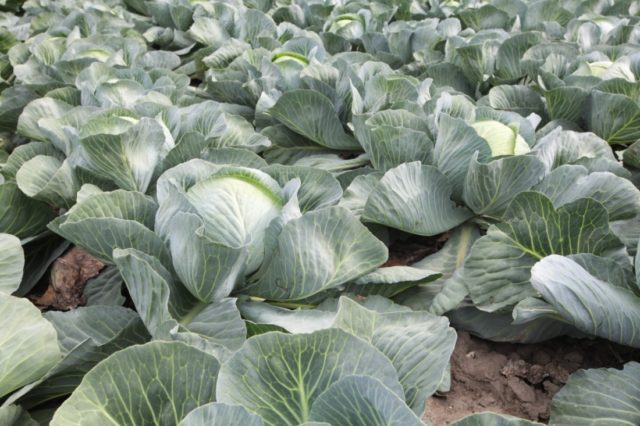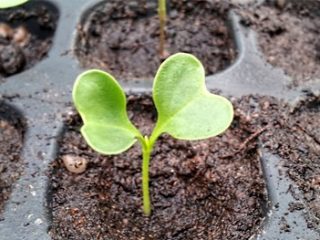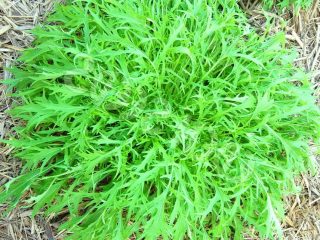Content
Photos, reviews and descriptions of the Prestige cabbage variety prove how successful the late variety of the crop, bred by Russian scientists in 2007, is. The productive hybrid is grown in the central regions of the middle zone, the Urals and Siberia.

Late cabbage Prestige F1 does not crack in the field; when stored indoors, it lasts until the beginning of next summer
Description of the cabbage variety Prestige
The leaf rosette of the Prestige variety is raised, 80-90 cm in diameter. The height of the outer stalk is 15 cm, the inner one is 6 cm. The leaves are slightly wrinkled, slightly bubbly, wavy along the contour. The upper ones are rich green with a grayish waxy coating. The underground part consists of a spindle-shaped taproot and many thin shoots that form a thick lobe and extract food from the soil with a diameter of 40-80 cm and a depth of 50-120 cm.
The head of the Prestige hybrid is round and medium in size. The upper covering leaves are smooth, light green, the inner leaves are creamy white, succulent. The structure is dense; when assessed, this characteristic received 4.5 points. The tight fit of the leaves that make up the head indicates that the vegetables are shelf-stable and tolerate transportation well. The average weight of a head of Prestige cabbage is 2-3 kg.
In a late-ripening hybrid, general development continues for 160-170 days, of which 120-130 days in open ground, after transplanting the seedlings.
Advantages and disadvantages
Late-ripening white cabbage Prestige is liked by gardeners. The variety is grown in private plots and on farmland.
Characteristics of Prestige cabbage is replete with advantages:
- versatility of use;
- high commercial performance;
- the density of the heads, which provides for long-term preservation on the root, the possibility of mechanical collection, keeping quality and transportability;
- good yield and marketability;
- resistance to fungal diseases and slug invasion.
Gardeners may be dissatisfied with only one feature of the Prestige hybrid - the inability to collect the seeds themselves.
Cabbage yield Prestige
Late-ripening Prestige is high-yielding. From 1 sq. m yield up to 10 kg of vegetables, which are stored without loss for 6-7 months. Productivity depends on the following factors:
- sufficient site humidity;
- fertile soil;
- solar lighting;
- timely treatment against pests.
Planting and caring for Prestige cabbage
The late-ripening crop is grown through seedlings; the entire growing season lasts 5-6 months. For sowing, mix garden soil, humus or compost, peat or sand, and wood ash. For a small amount of cabbage, which is grown in a personal plot, the seeds are laid out in separate pots or sown in a common bowl, followed by planting, no thicker than 20 mm. The bowl is placed in a corner with a temperature of 18-21 °C.As soon as shoots appear after 5-8 days, the containers are transferred for a week to a cool place at 12-16 °C. The sprouts of Prestige grow stronger, the stem becomes thicker, but does not elongate, leaves appear.
Make sure that daylight hours last for 12 hours at a temperature of 15-20 °C. With sufficient nutrition, seedlings grow slowly, while hardening. Transplant as soon as the third leaf appears into individual cups 8-10 cm wide and the same height. Prestige seedlings are transferred to open ground or under film covers in April. Planted in holes at a distance of 60 x 60 cm. Soils with a pH reaction of 5-7 are suitable for cabbage - light loamy, chernozem and sandy. On sour soils, the crop is affected by an incurable disease - clubroot.

Throughout the entire growing period, late Prestige cabbage is watered abundantly.
When planting in April, the top is covered with agrofibre to protect from frost, cruciferous flea beetles and cabbage flies, which begin to actively emerge from late April, early May.
Cabbage is watered regularly so that the soil is constantly moist: in drought, every day, if there is moderate rain, after 3-5 days. After watering, the soil is loosened superficially, destroying the crust and emerging weeds. You should not take too long breaks in watering cabbage, as the roots develop, not the heads.
The Prestige variety needs fertilizing for good yield, when various preparations are diluted in 10 liters of water:
- the first is carried out 2-3 weeks after transshipment, when 5-6 true leaves have already formed, with a solution of 200 g of ash and 60 g of superphosphate - 0.5 liters for each plant;
- when a rosette is created, 2 weeks after the first feeding, - 40 g of nitrophoska;
- after 10 days, at the beginning of the formation of the head, - organic matter with superphosphate;
- 1.5 months before harvesting, 40 g of potassium sulfate or fertilized with chicken droppings.
After fertilizing, the area is watered abundantly.
Diseases and pests
In early spring, cabbage seedlings may suffer from overwatering and develop blackleg disease. Hybrid Prestige is known for its strong immunity against fusarium and alternaria, and during storage it is not affected by white or gray rot. A good prevention against fungal diseases is adding two tablespoons of wood ash to the hole. Early plantings are treated with the following products: Fitolavin, Actofit, Planriz and others.
In April, the invasion of the cruciferous flea beetle and cabbage fly begins, which are repelled with insecticides. A late-ripening variety can be affected by cabbage moths, cutworms, white moths, and mole crickets, against which insecticides are used.
Application
Heads of hybrid Prestige are used for various purposes:
- component of fresh salads;
- for first and second courses;
- for pickling in winter.
The dense leaves do not lose their juiciness until the end of spring and provide variety with vitamins.
Conclusion
Photos, reviews and descriptions of the Prestige cabbage variety indicate good characteristics. Heads of cabbage are suitable for use for a long time. Growing it requires some care, but doing it correctly ensures a healthy and tasty vegetable.








